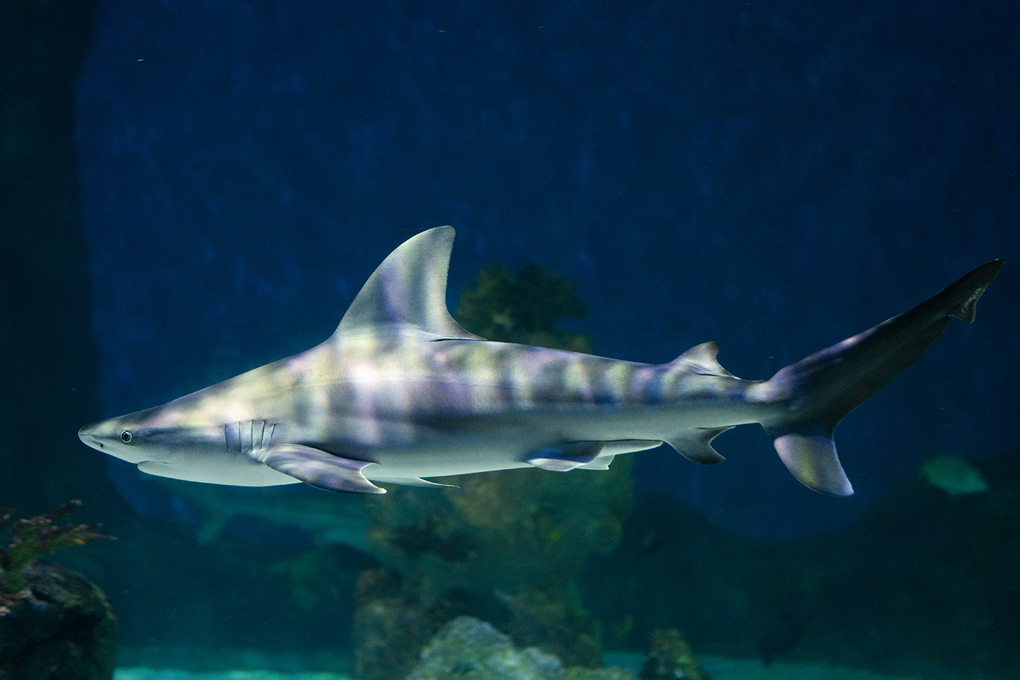Carcharhinus plumbeus
Fast Facts
- Other common names of this animal are the brown shark, Queriman shark, and thick skin shark.
- Juvenile Sandbars may be vulnerable to predation from larger sharks, but as adults, they have few to no predators.
- In the Southern Hemisphere, mating occurs between October and January with a 12-month gestation.


Range
Western Atlantic and South-Western Caribbean

Habitat
Continental and insular shelves, as well as deep waters

Size
Up to 14 feet

Nutrition
Small bony fishes, crabs, and shrimp
Characteristics
The average weight of Sandbar sharks is 110 pounds for males and 150 pounds for females. Their body is brownish or dark gray with a lighter belly. The snout is rounded and quite blunt compared to other species of shark. The first dorsal fin is notably large, and Sandbar sharks have an interdorsal ridge.
Behavior
Sandbar sharks feed throughout the day but become more active at night. When compared to other sharks in the family Carcharhinidae, the Sandbar shark seems to have a better feeding strategy.
Reproduction
These sharks are viviparous, giving live birth. After fertilization, there is an eight to nine month period for gestation in the western Atlantic population. The pups are born between June and August. Females living near the coast of southeastern Africa experience a 12-month gestation period, giving birth from December to February. The size of the litter also varies by region and size of the mother, but typically there are 6-13 pups per litter.

